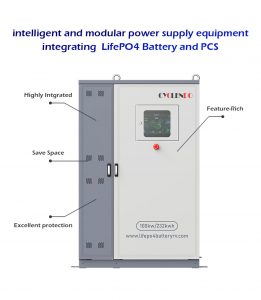Energy storage cabinets are typically made up of multiple components that work together to store and release electrical energy. Here are the main components of an energy storage cabinet:

Battery components:
Battery cells: The heart of the energy storage cabinet, typically using lithium-ion batteries or other chemical battery types. Battery cells are grouped together to provide the required energy storage capacity and output power.
Battery Management System (BMS): Responsible for monitoring the battery's status, temperature, and charge level to ensure safety and optimized performance.
Inverter:
DC to AC inverter: Converts stored DC power into usable AC power for home appliances or the grid.
Power electronics: Such as converters and control circuits that manage the conversion and distribution of electrical energy.
Control system:
Battery controller: Works in coordination with the battery management system to ensure safe operation and optimal performance of the battery.
System monitoring and management: Includes user interface, data acquisition, and remote monitoring capabilities for users to monitor the status and performance of the energy storage cabinet.
Connectors and cables:
Battery connector: Connects the battery cells to the battery management system.
Grid connector: connects to the home grid or other energy system to supply power to or receive power from the grid.
Housing and heat dissipation system:
Chassis: protects and houses all components and ensures safe operation of the energy storage cabinet under various environmental conditions.
Heat sink: used to dissipate the heat generated by the inverter and battery system to keep the system temperature within a safe range.
Safety and protection devices:
Overcurrent protector: prevents current overload from damaging the battery and inverter.
Overvoltage protector: prevents excessive voltage from affecting the safe operation of the battery and inverter.
Temperature sensor: monitors the temperature of the battery and inverter to prevent overheating.
These components of the energy storage cabinet work together to enable it to store and manage electrical energy in a home or commercial environment to achieve energy efficiency and sustainable development goals.